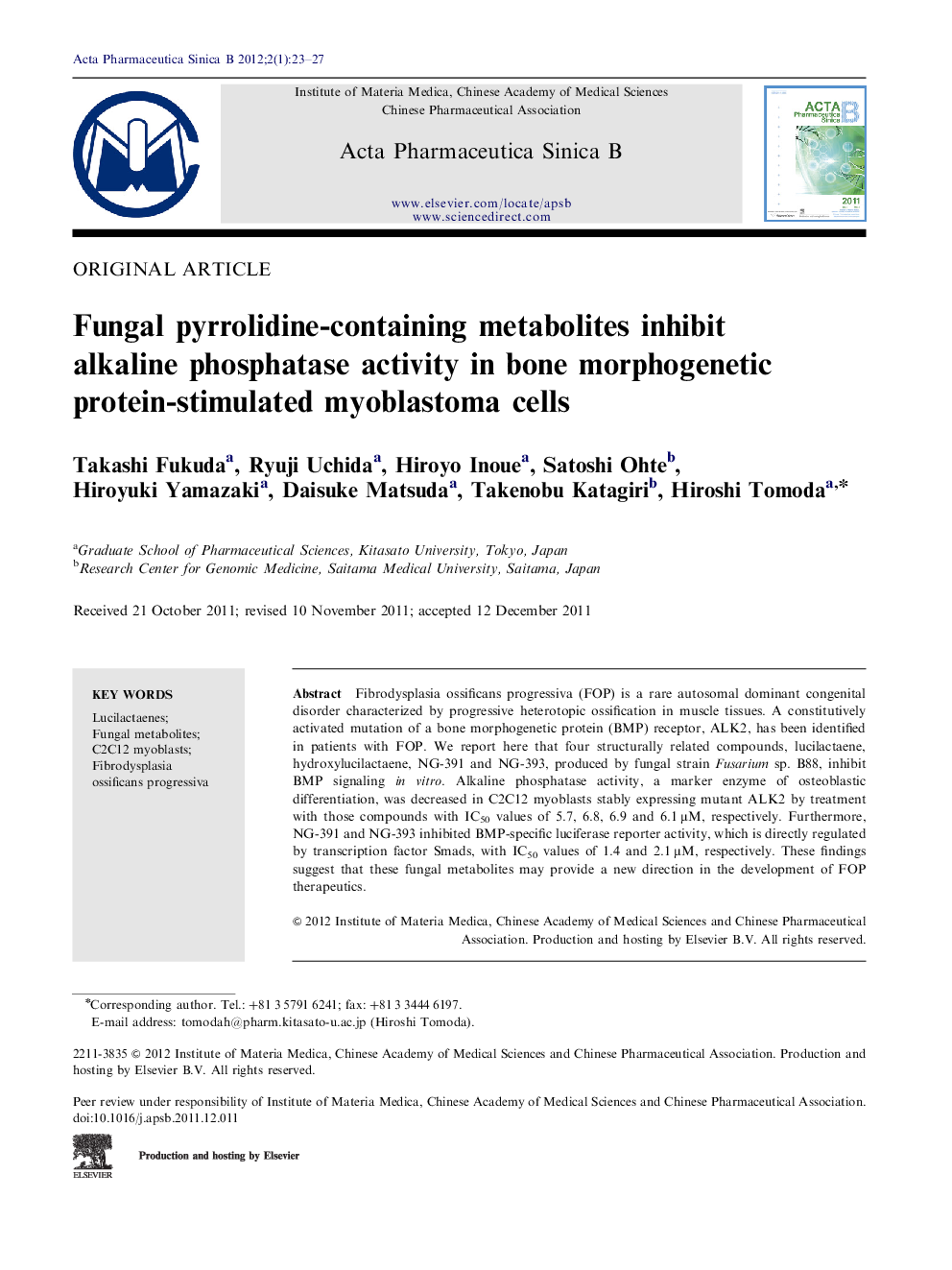| Article ID | Journal | Published Year | Pages | File Type |
|---|---|---|---|---|
| 2474903 | Acta Pharmaceutica Sinica B | 2012 | 5 Pages |
Fibrodysplasia ossificans progressiva (FOP) is a rare autosomal dominant congenital disorder characterized by progressive heterotopic ossification in muscle tissues. A constitutively activated mutation of a bone morphogenetic protein (BMP) receptor, ALK2, has been identified in patients with FOP. We report here that four structurally related compounds, lucilactaene, hydroxylucilactaene, NG-391 and NG-393, produced by fungal strain Fusarium sp. B88, inhibit BMP signaling in vitro. Alkaline phosphatase activity, a marker enzyme of osteoblastic differentiation, was decreased in C2C12 myoblasts stably expressing mutant ALK2 by treatment with those compounds with IC50 values of 5.7, 6.8, 6.9 and 6.1 μM, respectively. Furthermore, NG-391 and NG-393 inhibited BMP-specific luciferase reporter activity, which is directly regulated by transcription factor Smads, with IC50 values of 1.4 and 2.1 μM, respectively. These findings suggest that these fungal metabolites may provide a new direction in the development of FOP therapeutics.
Graphical abstractFour structurally related compounds, lucilactaene, hydroxylucilactaene, NG-391 and NG-393, produced by fungal strain Fusarium sp. B88, inhibit BMP signaling in vitro and these fungal metabolites may provide a new direction in the development of FOP therapeutics.Figure optionsDownload full-size imageDownload as PowerPoint slide
